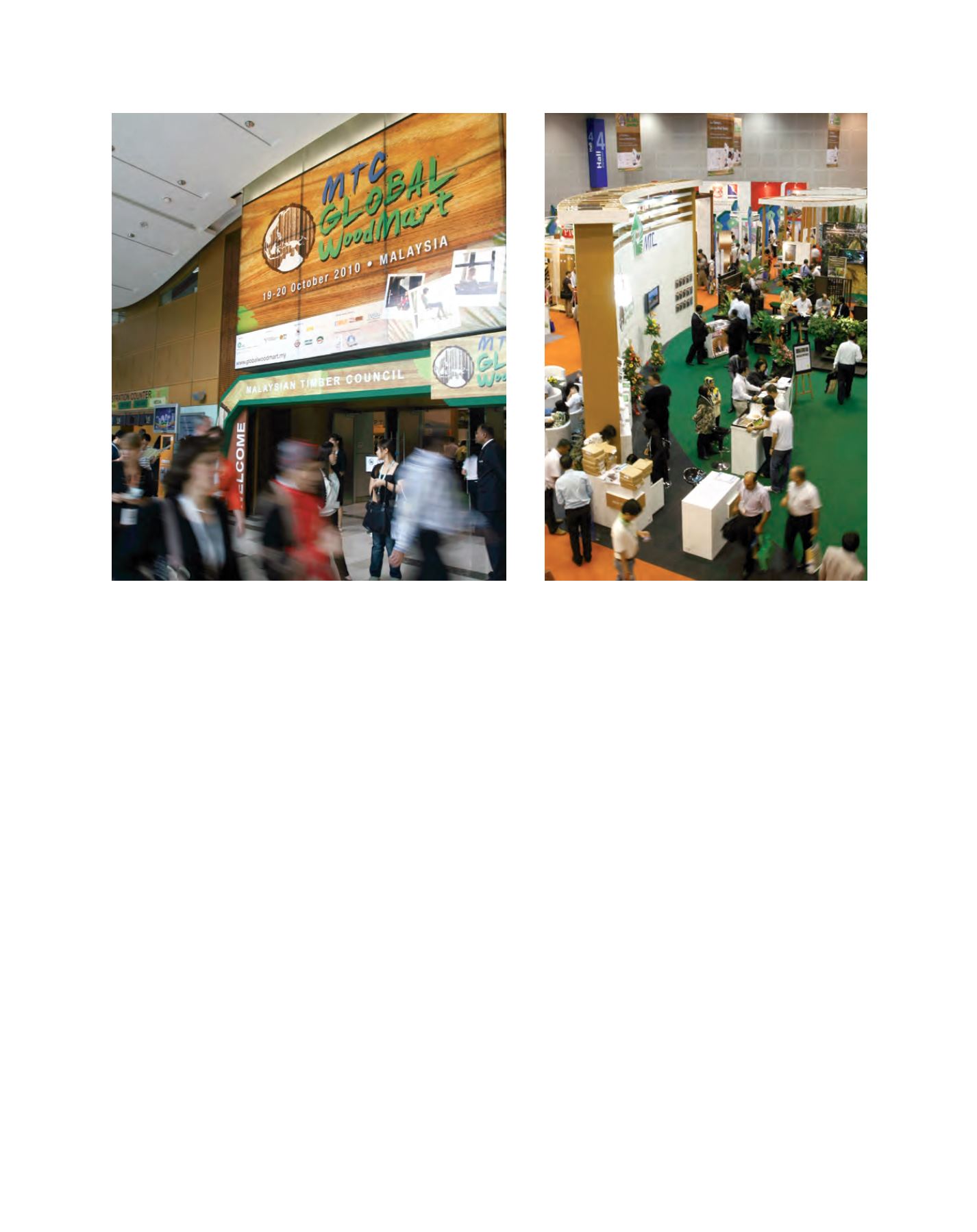

[
] 100
2006. Most recent was MTC’s inaugural Malaysian
Global Woodmart (MGW) 2010, a timber products
supply exposition held in the Malaysian capital city
of Kuala Lumpur. Hosting 108 companies from 19
countries, the event brought together wood industry
players from all corners of the world to network and
trade on a single platform.
The timber sector’s contribution to growth
In 2010, the timber sector, which included major
products such as sawn timber, veneer, plywood,
moulding, furniture and medium-density fibreboard,
contributed 3.7 per cent to the national gross domestic
product, making up 3.2 per cent of total merchandise
exports. Amidst a global downturn, the exports of
Malaysian timber and timber products registered a
positive growth of 5.3 per cent in 2010, an increase
in the total export value from US$6.1 billion in 2009
to US$6.4 billion. The sector provides employment to
over 318,000 people.
Increasing resource efficiency
Competent human resources and up-to-date technology
are key ingredients that foster a productive industry and
ensure efficient utilization of resources. Towards this
end, a three-pronged approach was employed which
included programmes for skills development, timber
utilization enhancement and product diversification,
as follows:
enhancing market access and creating environment and trade oppor-
tunities, in addition to the overall promotion of SFM and trade in
sustainably produced timber product at local and international
levels. Malaysia has over the years been globally recognized as a
leading country in sustainable management of tropical forests as
well as a major producer of tropical timber.
National Timber Industry Policy
Complementary to the NFP, the pathway towards sustainable
development of the timber sector was further supplemented by the
National Timber Industry Policy (NATIP) which was launched by
the Malaysian Ministry of Plantation Industries and Commodities in
2009. The aim is to achieve US$16 billion exports of timber product
by 2020, requiring a sustainable net growth at the rate of about 6.5
per cent per year. Collaborations between various timber-related
agencies such as the Malaysian Timber Industry Board, Forest
Research Institute of Malaysia, Forestry Department of Peninsular
Malaysia and MTC were further enhanced to achieve the over-arch-
ing goals of NATIP.
Market development
Whilst keeping pace with the evolution of international forestry
policies, MTC launched and implemented market development
initiatives and programmes that fit into the macro view of advanc-
ing and achieving SFM, to satisfy the prevailing timber market
conditions and requirements. Among the most notable achieve-
ments were forward-looking concepts and initiatives that led to
the formation of the Malaysian Timber Certification Council in
1998 and the Forest Plantation Development Berhad Sdn Bhd in
Malaysian Global Woodmart took place in 2010 at Kuala Lumpur Convention Centre
Foreign and local exhibitors and visitors attended the MGW 2010
Image: Malaysian Timber Council
Image: Malaysian Timber Council
















